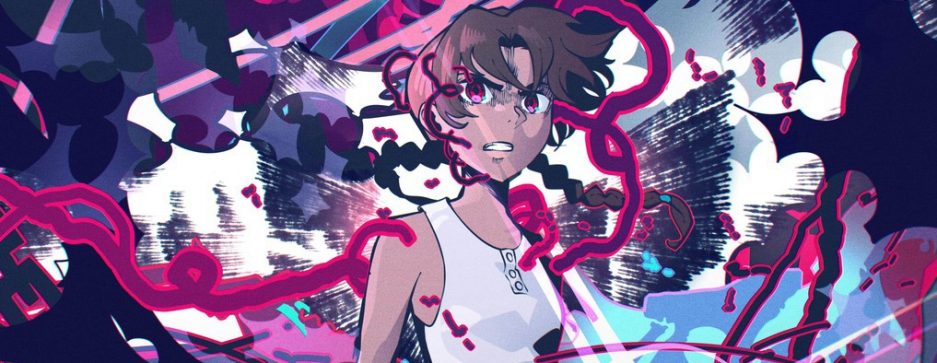Due to a scarcity of noteworthy scenes this week outside of Pokemon, which finds it’s way into these columns often enough as it is, we’ve decided to each pick our favorite cuts from F/Go #08 to share and discuss!
Key Animation: Kai Ikarashi (Pen Name: Setsuko Narayama)
Realdesuran: Ikarashi’s an animator I’ve been enamored with since his early work on Kiznaiver, and with drawings like these you have to be blind not to be. It’s hard to deny that the man’s got a compelling personal voice, combining the crazy dynamic posing found in most Kanada-school animators and mixing in some Yuasa influence to create a distinct presence even in shows already swarming with talent.
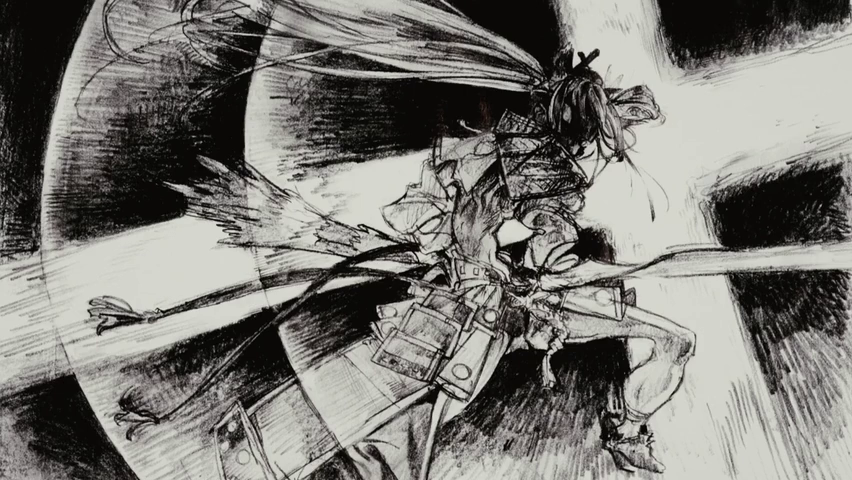
Ikarashi’s touch on the show is such a breath of fresh air, it’s satisfying as hell to see normally sterile designs getting injected with some honest-to-god liveliness. The build-up to the finisher is masterfully executed by characters contorting their bodies in wild, perspective heavy poses to really sell that energy. Reminds me a lot of his work on BC #63, seemingly chaotic cuts that thrive in aggressive visual tension to deliver a cathartic release, the best kind of controlled chaos.
Oh, and I guess those impact frames are pretty cool.
Key Animation: Toru Iwazawa (1st cut only), Jin Oyama
Blou: Following Ikarashi’s short but intense visual spectacle, Toru Iwazawa animated one cut where the emphasis on Gorgon’s gigantic size is apparent through huge debris and fast background animation. Iwazawa was only here to help his friends so I won’t talk too much about it, especially since after that we have Jin Oyama animating the first action set-piece of the episode! Toya Oshima, the storyboarder, focused on Ushiwaka’s speed by making her appear and disappear from the screen in the blink of an eye. From 0:20, Oyama starts to shine with one of my favorite cuts of the episode. Ushiwaka’s movements are fast but the choreography is easily readable and with the parallax applied to the background, these cuts bear a feeling of “organized” chaos. The rest of the scene consists of Takeuchi-school character acting. Tetsuya Takeuchi is seen as one of the greatest animators in the industry but his style requires a lot of attention to secondary motion, as well as a high number of drawings. Thus you wouldn’t find many examples of young animators mimicking his style, yet Jin Oyama does it and lord, he does it brilliantly! He gave a new whole meaning to the scene by animating Ritsuka’s acting in such a cathartic way, as a result you can feel his anger and frustration through the movements alone.
Key Animation: Naoki Miyajima
Blou: After a short interlude, we return to the fight between Ushiwaka and Gorgon, this time animated by Naoki Miyajima. Miyajima is a great and quite reliable animator from this crew but what stands out to me is the storyboarding of the scene so let’s talk about that!
Storyboarding action scenes against such big opponents is never an easy task and many anime fail to provide exciting pieces, whether because they don’t have the sufficient resources to do so but also because even ambitious attempts can be misguided. Fortunately, Toya Oshima is a specialist of depicting huge and spectacular action pieces. There’s this feeling of going through the whole location as we go along with Ushiwaka escaping Gorgon’s beams. And again, there’s constantly this idea of the former appearing and disappearing within the same shot. Toya Oshima managed to portray the fights through the eyes of both characters: The huge scale representing Ushi’s struggle to fight her immense opponent and Gorgon’s trouble to follow such a tiny and fast enemy. To put it simply, Oshima turned this fight into a spectacular game of cat and mouse!
The rest of the action follows the same idea and you’re presented with many exciting sequences: be it the incredible effects-focused part of dogakobo-affiliated genius Yusuke Yamamoto, the epic entrance of Leonidas on the battlefield portrayed by mecha expert Gen Asano or the skillful effects and fabric loops by Im@s crew prodigy Naoya Takahashi. This part of the episodes serves the purpose of a build-up until that one scene…
Key Animation: Aito Ohashi
Geth: Perhaps my inner Pokémon fan bias is showing but I couldn’t resist choosing Aito Ohashi’s scene to talk about, as he slipped away from Pocket Monsters some time ago to instead take charge of a different kind of monster, namely Leonidas.
Ohashi’s snappy timing and effects should be familiar to anyone that has been keeping up with Sun & Moon, now with the added benefit of some better visibility, seeing (or not seeing) as how OLM’s photography team can often leave a lot to be desired.
Here they are unimpeded in their greatness which allows for his usual crafty efforts to be all the more noticeable. Like how for example, with the exception of a couple of frames, Ohashi ensured Leonidas’ eyes are always visible, dancing his sharp effects around the perimeter as the shield gives way for the main attraction to come into view.
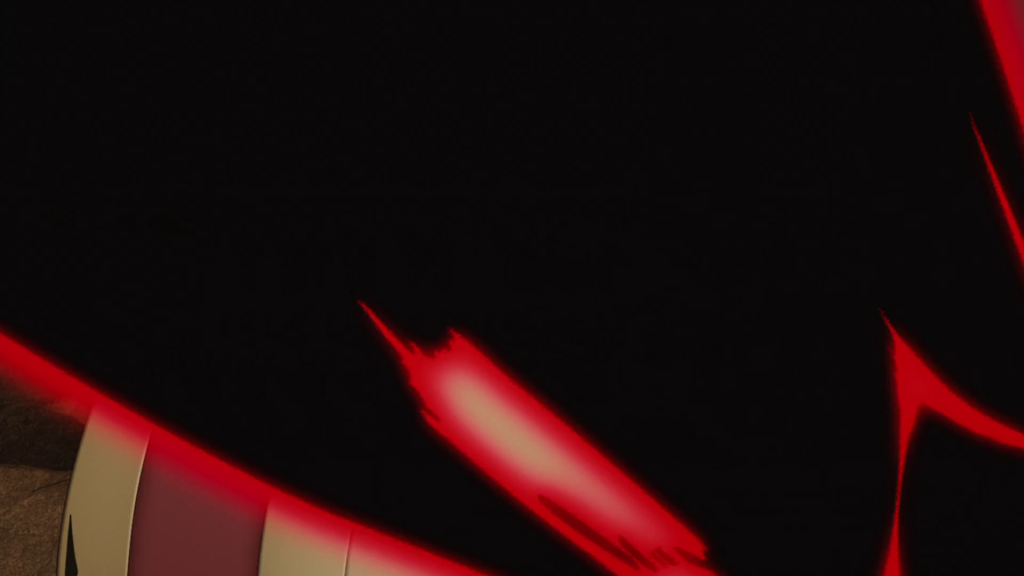

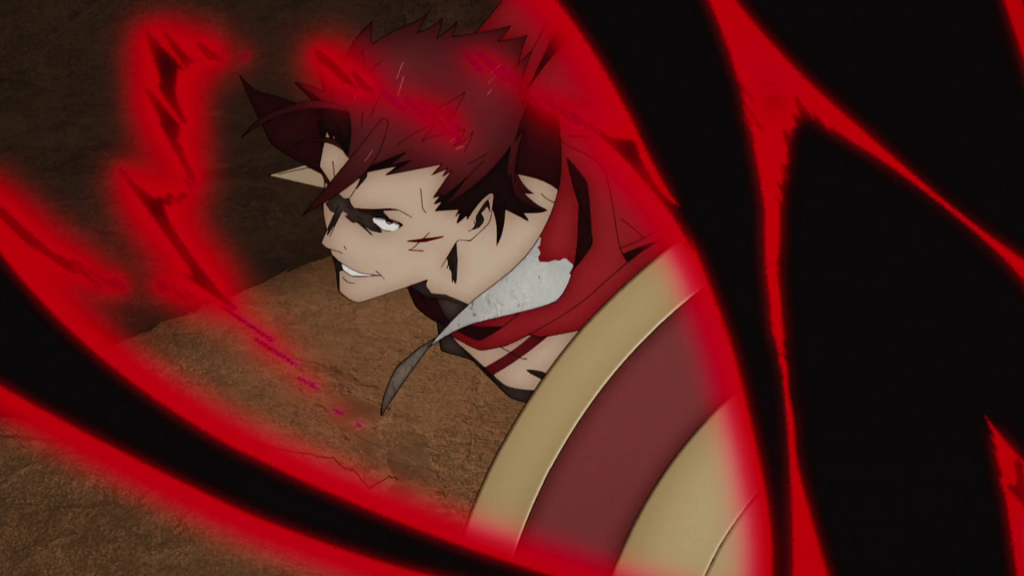
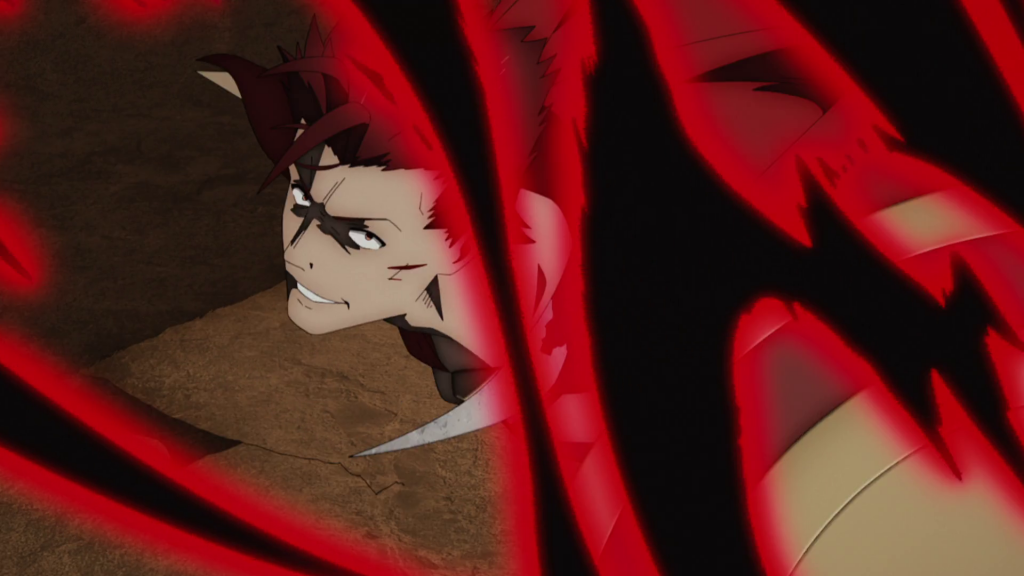
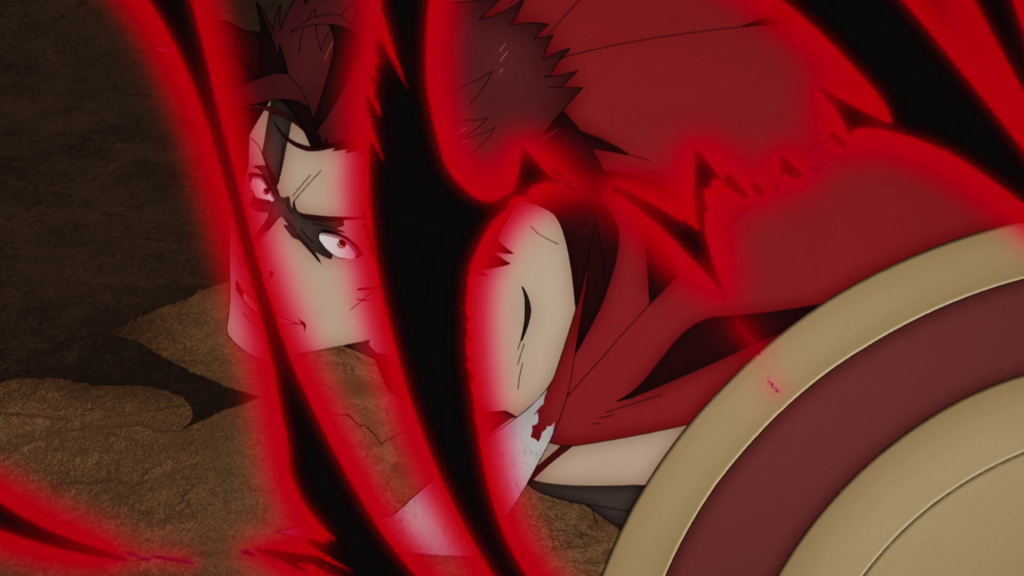
Another key aspect to the sheer effectiveness of this scene is found in the background animation, which Ohashi has made constantly in motion to give steady, consistent momentum across the entire buildup to the herculean throw. And what a throw it is, being extremely anticipation heavy while paired with that tricky foreshortening-focused angle of Leonidas’ arm.


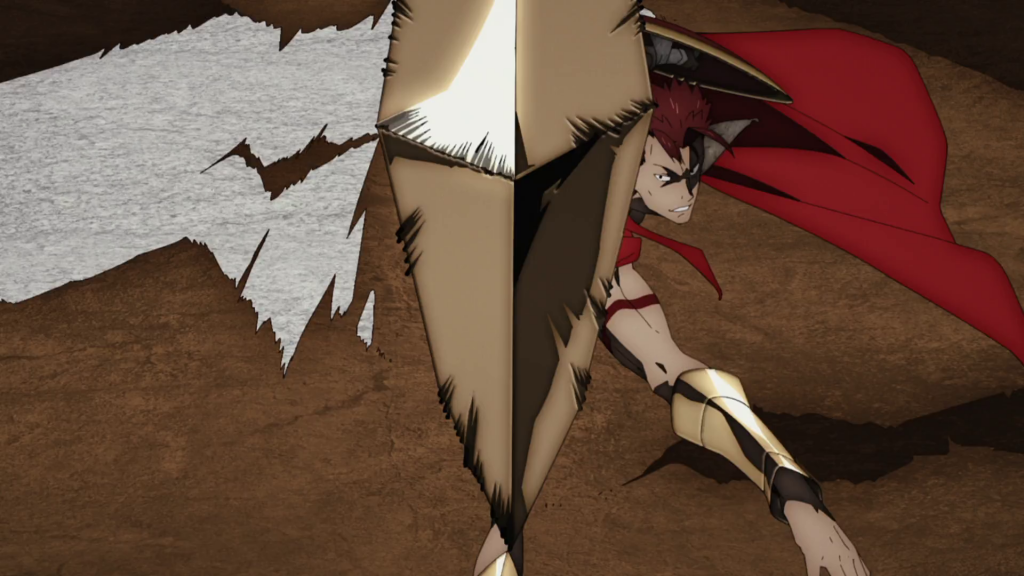
More than anything the final cut is simply cool factor to the extreme. Though it’s often said tough guys don’t stare at explosions, we can make an exception if you’re looking down the village-wide gaping hole you just made.

Key Animation: Yuki Yonemori, Tatsuya Miki (0:48 – 1:02)
Blou: The final action part of the episode is obviously what gathered the most attention and while we’ll talk about it, I would like to mention the part before, animated by Yuki Yonemori and Tatsuya Miki. Yonemori’s style was a perfect fit for the slow build-up of Ushiwaka rising. His drawings and animation evokes delicacy and elegance, notably through long and thin limbs. Yonemori puts a lot of care into subtle body motion as well and that’s something that made him nail many of those slow but highly emotional scenes in the past. Through varied timing and subtle motion (notice the hair animation), there’s a sensation of time suddenly slowing down. which gives all the more emotional weight when it seemingly resumes to its normality, opening the way for an epic last battle. This part is animated by Tatsuya Miki who managed to inject even more grandeur to Ushiwakamaru by drawing abnormally long and voluminous hair (he jokingly admitted to expecting someone to stop him but fortunately it seems everyone was okay with that)
Key Animation: Yusuke Kawakami
Geth: Unfortunately when the parts are split into segments to speak about on an individual scale like this, a lot of the purposefully constructed intuitive transitions between them are lost. I personally found the switch from Moaang to Kawakami’s scene to be especially strong, mainly coming from the way Kawakami manipulates the camera in the long first cut; Having Fujimaru’s useless-as-always shout of encouragement carry on through the wind as we zoom into the fray to join Ushiwakamaru as she takes off through the bramble of incoming tendrils. Kawakami’s 3rd person camera isn’t fixed either and via the power of what is likely Blender (a 3D software he often makes use of) it leads to some really engaging shots. Such as where it briefly switches to first person perspective in time to be eaten, not long before reverting back to the outside to observe Ushiwaka carve her way out.
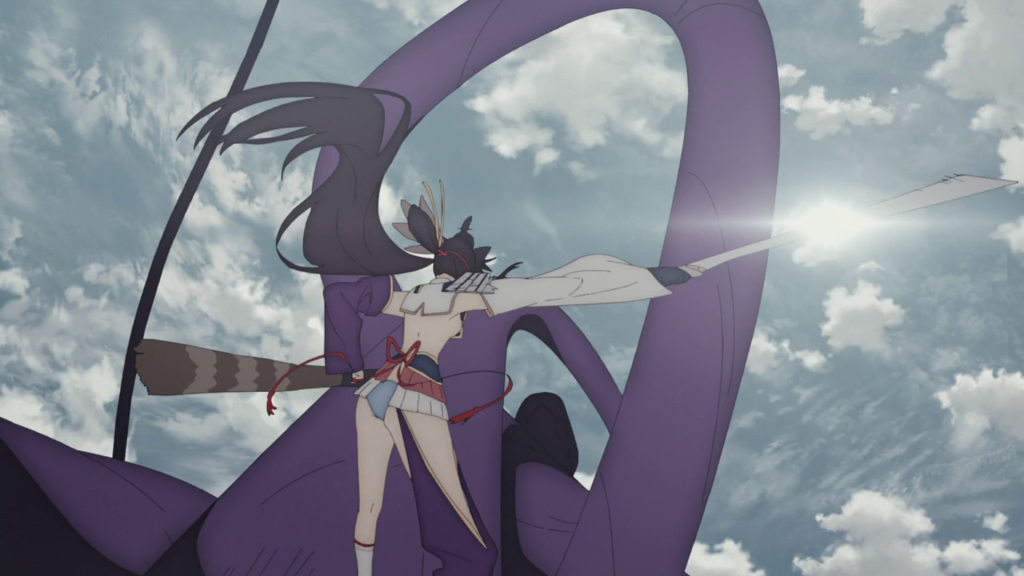

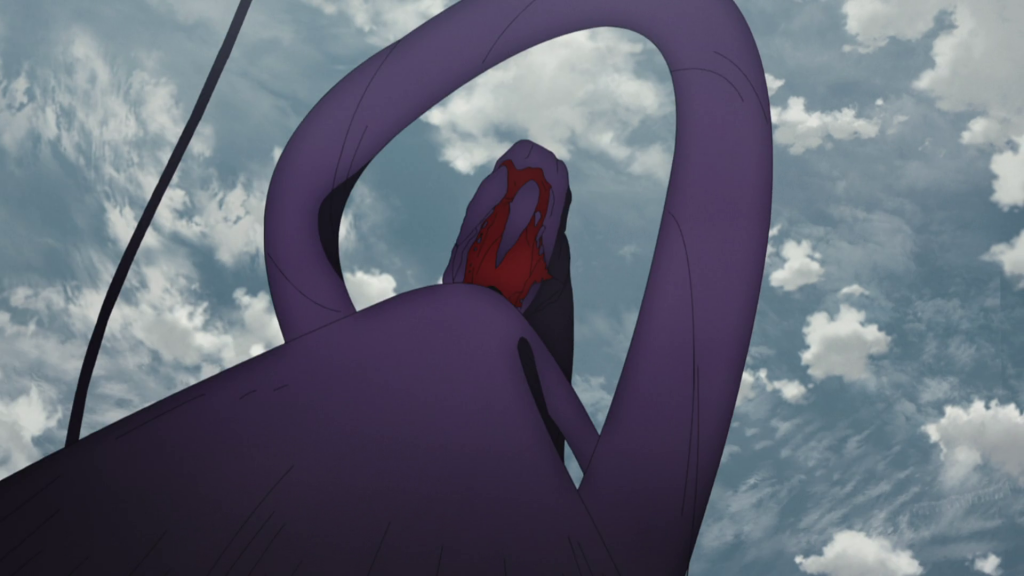
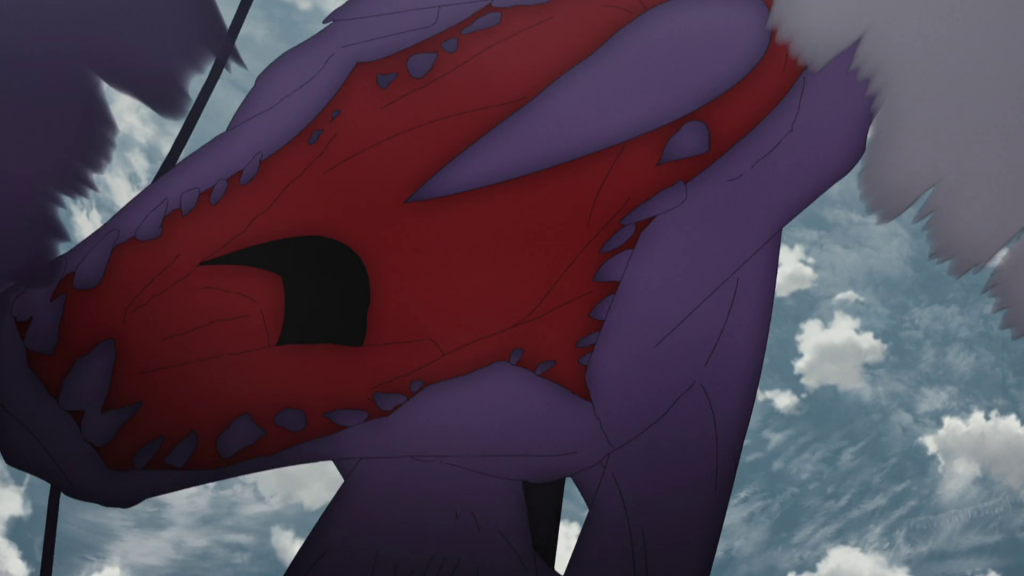

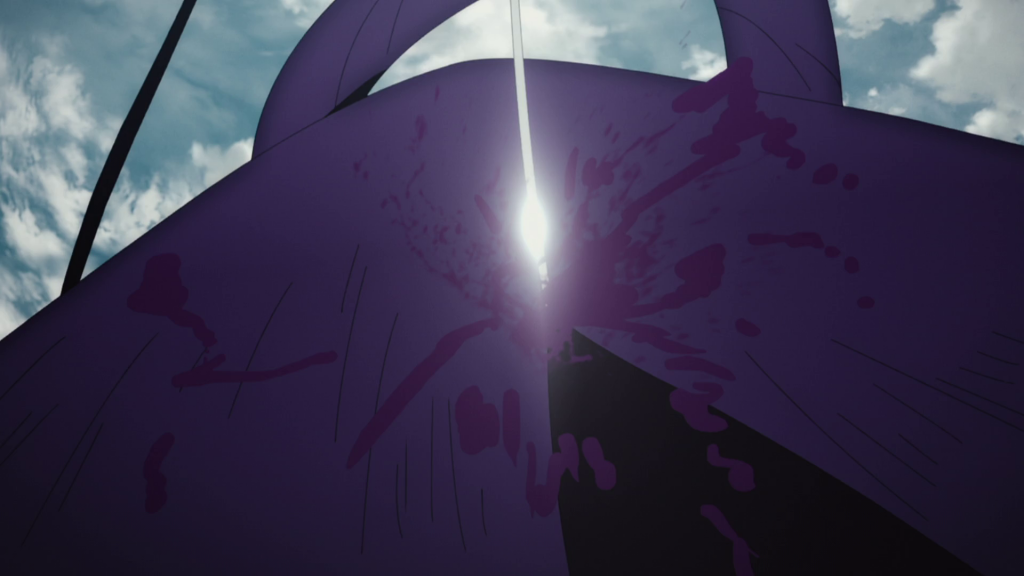
A few chromatically aberrated impact frames later and Kawakami bookends his ambitious first cut by dropping one of the discarded globs into the camera, creating a clean slate to transition nicely into the next where he shows off economical wind effects, nearly identical in execution to his former mentor on Black Clover, Tatsuya Yoshihara.

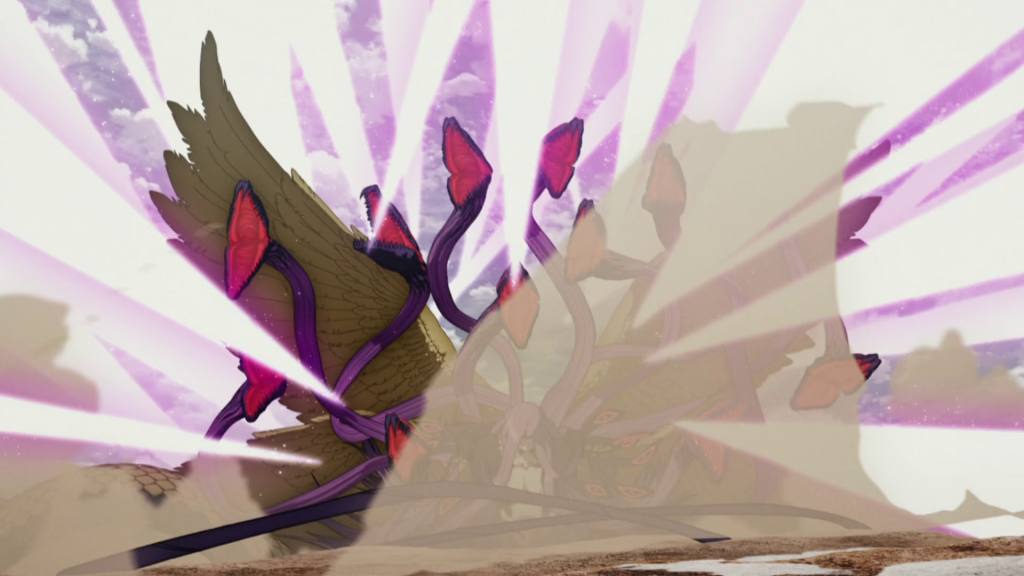
Key Animation: Kosuke Kato
FAR:
As soon as I saw the portion of the Ushiwakamaru scene entrusted to Kosuke Kato, my enthusiastic memories of Yoshimichi Kameda’s very short but very energetic cut in the fourth opening of Fullmetal Alchemist Brotherhood quickly came to my mind: not only did it share with the sequence of Kato eastern-esque warriors who fight on the back of an enormous monster but also makes use of similar visual stratagems to represent the impetus of speed such as a dizzy timing that provides so much space for the individual secondary poses and a large number of kinetic lines and smears that trace the movements of the blades.
I don’t think that Kato was necessarily inspired by Kameda; although he certainly saw that scene at least once, rather I believe that through the roots of both there are some of the stylistic features of Yoshinori Kanada and his disciples, which might have led to a similar result though with important differences, just look at the thickness of the various individual lines for example. If those of Kameda sometimes resemble those of a Sumi-e painter of the past, Kato’s thin smears are more reminiscent of the work of an attentive cartoonist skilled in the hatching process.
One thing that I personally appreciated so much about the Ushiwakamaru assault as a whole is how each animator with different styles has been given a part of the action congenial with their timing preferences and overall style. In Kato’s part, Ushiwaka has by now almost exhausted her strengths and her movements become more cumbersome and irregular even though she tries anyway to move with the utmost impetus and using all her strength. Rather than running, as in the previous scenes, she seems to prefer turning into a human bullet hurling herself against Gorgon’s arms.
Lastly, I want to point out how the storyboard has brilliantly and intelligently distanced Ushiwaka from the camera so that she could be drawn by way of little details compared to the rest of the scene, thus helping the animator in charge of the part to draw her outlines in tune with the style of the effects and the smears without making this off-chara moment too obvious to the general public, like in the still excellent Ikarashi scene. Certainly, compared to Ikarashi’s cuts, Kato’s are way less showy but If you like more extreme timing and rough outlines I still suggest you to study his opus starting from his excellent scenes in Pokémon the Power of Us, Black Clover and in Mob Psycho 100 II. You will not regret it.
